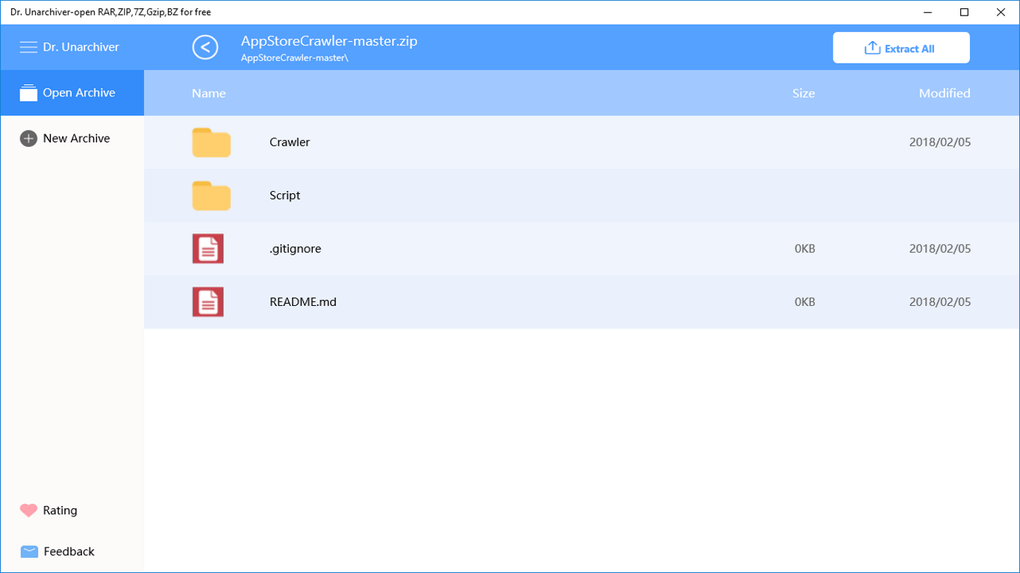

- The unarchiver english pc for free#
- The unarchiver english pc update#
- The unarchiver english pc archive#
- The unarchiver english pc zip#
PDF, HTML, RTF, mht, Safari webarchives and text files.
The unarchiver english pc archive#
Supported File Types: zip, rar, 7z, bz2, tar, gz and various other archive file types. Support opening document with other Apps. Create/copy/move/rename/delete files and folders. Upload multiple files and folders via FTP. File Management: Transfer files via Wi-Fi (FTP & HTTP) / iTunes File Sharing.
The unarchiver english pc zip#
zip document from one or more press a whole directory. Archiving & Unarchiving: unarchive files in. zip, rar, 7z, bz2, tar, gz and various other formats on your iPhone, iPad and iPod touch. ZipApp is an easy-to-use utility for unarchiving files in. While it could use some work in terms of connection speed and the interface, the tools are all there and work well.
The unarchiver english pc for free#
With a single ad at the base of the application and seemingly all of the core tools intact and working properly, it is one of the better options on the App Store right now for free file transfers. There are numerous options including the unarchiver feature to open Zip folders, search functions, backup functions, and more.Īs a file transfer and management tool, ZipApp is very feature rich, especially for a free tool. You can easily create new folders in ZipApp with the tap of a button and they will appear in the browser interface on your computer, and you can even create new text files that can be edited from within the app. This will create a browser window between your iOS device and computer so you can move files back and forth. Now go to a computer and open the IP address URL provided by the ZipApp interface. The concept is similar to other iOS file sharing tools-open the app and click on the upload or share button. However, file sharing is very limited as it is and requires a third-party app, so there are tools like ZipApp that allow you to quickly and easily move files from your computer to your device. They are portable, have remote connections to the Internet and allow you to access the files and view them on the go, something that a flash drive cannot do. This should fully stop the virus from showing up again.The iPad and iPhone are perfect for file transfers. When it's opened, delete the task called contentmanagement. This is important, because it basically prevents you from running the Event Viewer, which we found a way around, but it also wont let you run the Task Scheduler, which I could not find a way around.Īfter that is done, restart your computer, and you should now be able to open the Task Scheduler with no issues. You need to delete the subkey named DisallowRun. HKEY_CURRENT_USER\Software\Microsoft\Windows\CurrentVersion\Policies\Explorer\ It might not show up, so search for it in the file explorer.Īfter this, go to your registry, and follow this path: If it is, go to your roaming folder (search %appdata%) and delete the archive folder. Then, confirm that Archiver.exe is what is using up all your virtual memory. In my case, I was not able to without using the command dialog box. For anyone who is having this issue, here's a quick guide, although it seems like most people here figured it out.įirst, you wanna try and run the event viewer. You won't find it on the task manager, because it closes itself whenever it is opened. Unarchiver.exe is located in my AppData/Roaming folder and was created on 12/10.Īny help with when this file is would be greatly appreciated.Īrchiver.exe or Unarchiver.exe is for sure malware. I've never had a low virtual memory issue in the past. I'll open up task manager and briefly see unarchiver.exe running, then disappear and my CPU usage goes back down. What I do know about this application is that my CPU utilization has been high during basic use. Everything keeps pointing to this "The Unarchiver" application, but I've never downloaded it, and I'm fairly certain this isn't the same thing. I cannot find any information on this whatsoever. Within, the details note that there are few applications are hogging up virtual memory. Looking at the event viewer system logs, the one standout item (to me, anyways) is Event ID 2004, Resource-Exhaustion-Detector. I've noticed my computer has been restarting when not in use several times per day for about a week now.

Original: I've searched high and low for some sort of answer here, but Google has been surprisingly unhelpful. Some users claim that deleting the unarchiver.exe file in your User directory has solved their issue as well. It's been 3 months and nothing has come back. My solution to this issue was a system restore.
The unarchiver english pc update#
Update: Since this post has gained some popularity in the months following my original post, I figured I'd throw a quick update in to help find the solution without needing to review the comments.


 0 kommentar(er)
0 kommentar(er)
